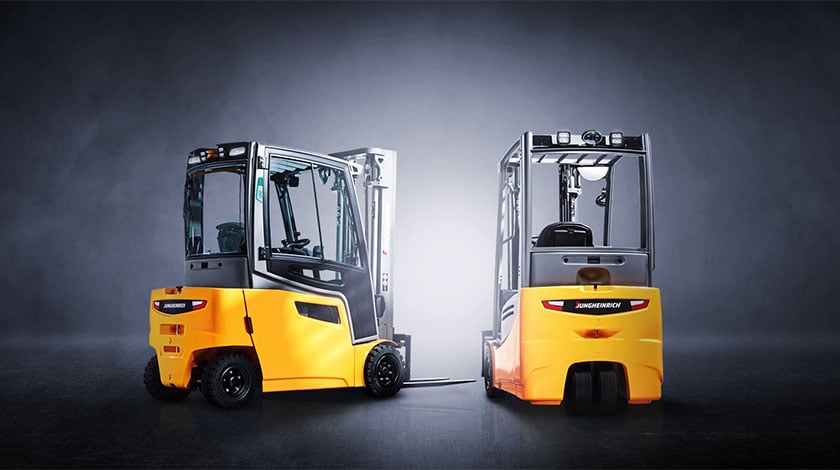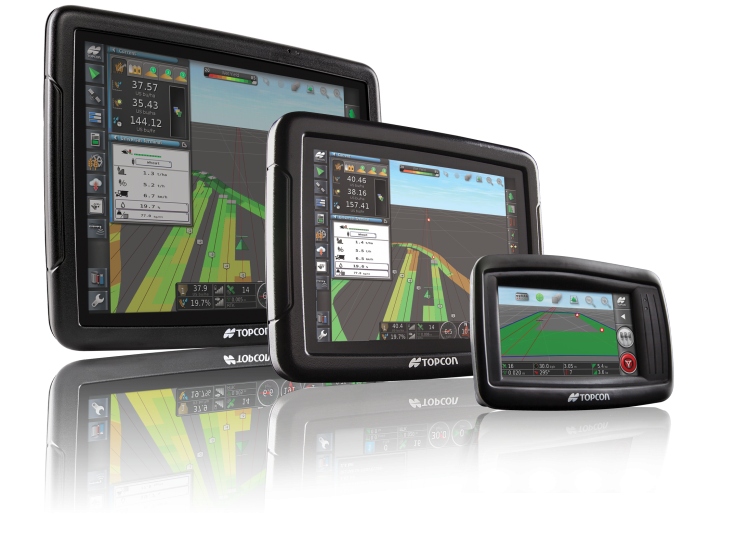Watch our Webinar: Software Quality for Industrial Vehicles
Quality Assurance for Industrial Vehicles
The industrial vehicles market is driven by technological advancements and the push for increased efficiency. This, however, comes with several challenges, such as cybersecurity threats and complying with regulatory requirements.
Let us show you how we can help you overcome these challenges. Get in touch with our experts and to schedule a meeting or request a demo.

Building the Future: Powerful Industrial Vehicles
The term industrial vehicles covers a wide range: from vehicles for goods and warehouse handling, over machines specifically designed for farming, agriculture and forestry, to heavy construction and mining equipment. However, as different as they may be, they have one thing in common: They need to be built to last in order to be economical.
Advancements in technology, such as incorporating IoT, AI, and machine learning into industrial vehicles, are transforming the industry. These innovations enable predictive maintenance, real-time monitoring, and improved operational efficiency. However, they also present challenges: With the increase in digital technologies, manufacturers face heightened vulnerability to cyber-attacks, which can interrupt operations and jeopardize sensitive information. Moreover, meeting strict safety regulations requires ongoing updates and investments in new technologies.
To future-proof industrial vehicles, it's essential to have software that is both dependable and easy to maintain, allowing seamless adaptation to evolving demands. Our analysis and testing tools help you achieve just that.
Take a Tour
Architecture Verification - the Foundation of Long-lasting Industrial Vehicles
Industrial vehicles—such as tractors, excavators, mining equipment, or forklifts—are intricate systems, managed by software that matches their complexity. This complexity is essential and good software doesn't need less complexity. It needs better maintainability and this begins with the software's architecture - the blueprint of your system. As software continuously evolves and various individuals or departments contribute to its development, it is crucial that everyone understands this architecture.
Our solutions not only assist with creating the necessary documentation to help your teams to understand the software and the impact changes to it might have. It can also ensure that any changes or additions to the code comply with the defined architecture. This is crucial for maintaining confidence in your software architecture, for instance, when calculating the resources required for refactoring or when using the architecture to introduce new team members to the software. Keeping your architecture consistently updated is the cornerstone for adapting to changing requirements.

Digging Deep Into Your Code to Unearth Hidden Issues
For heavy-duty software to operate at full capacity, you first have to make sure you have removed all obstacles. Identifying these at an early stage makes it easy to fix them and keep the code clean. High code quality not only means less resources are needed to fix issues or ensuring better test results. Software which is free of technical debt is also much easier to maintain and thus easier to update and upgrade.
To find issues such as clones, dead code, cycles or violations of coding guidelines, you sometimes need to dig deep into your code to detect them. This is best done with an automated static code analysis process, which seamlessly integrates into your existing development environment. By including static code analysis into your daily CI/DevOps process, you extent the overall life-time of your software.
Learn more about Static Code Analysis
Compliance With Leading Guidelines and Standards for Industrial Vehicles
Safety and security always have to come first. Industrial vehicles are typically extremely powerful machines and failure to operate as intended can have fatal results. Therefore, it is only logical that they need to meet high standards and comply with industry guidelines. We have the solutions to help you comply with these guidelines and standards - including Tool Qualification Kits.
Code Coverage for Industrial Vehicles Testing
Most industrial vehicles are operated in safety-critical environments. Therefore, all tests need to be thorough as there is no margin for error. To detect gaps in your testing protocols, you need to verify that you have tested your entire code.
Our cross-platform and cross-compiler tool Coco provides valuable insight at every level of testing. It supports various coverage levels, such as function coverage, statement coverage or MC/DC to identify untested code, guide your testing efforts and improve your overall code quality. Test data generation lets you reach the highest feasible coverage level faster, sorts out redundancies in code coverage analysis, and gets automatic collections of test data that includes edge cases.
Our code coverage solution easily integrates with various build, test and CI frameworks to provide advanced analysis of your code, e.g. by merging multiple execution reports.
Automated GUI Testing for Industrial Vehicles
While autonomously operating vehicles are increasing in number, the vast majority still require some kind of human interaction. Therefore, HMIs play an important role - not only to operate the vehicles, but do so safely. Extensive GUI testing is key to ensure this.
By automating GUI testing, the growing complexity of software for industrial vehicles is no threat to safety and security. Easy to integrate into your agile development process, our software quality solutions will help you shorten your testing cycles and ensure a better test coverage. By detecting bugs at an early stage of the development cycle, you reduce the resources needed to fix them - ultimately, improving your ROI and allowing your developers to focus on implementing new features and updates.
Success Stories
Read what our customers have to say. Learn more about the benefits of integrating our Quality Assurance products into your software development process.

“From a technical perspective, the Axivion Suite won us over with all of its functions for automated code and architecture verification.”

“That’s [Squish’s] selling point: regressive coverage. Once you’ve added a string of tests from a release cycle, you don’t have to go back and manually cover that again.”

“Within the first year [of using Squish], we developed enough automated tests to save our field testing guys 8 hours per build!”
Article
Cybersecurity Risks and Solutions for Industrial Vehicles
As industrial vehicle automation and connectivity rise, so do cybersecurity risks. Fleet managers must identify threats and take preventative measures to protect their assets. Learn how to protect your fleet from cybersecurity threats.
Read article
Article
How Advanced Technologies are Shaping the Heavy-Duty Industry
Advanced technologies are transforming the design, development, and operations of heavy-duty vehicles across agriculture, construction, and heavy machinery operations. Learn how digitalization and electrification are driving this transition.
Read article
Article
Evolving the Workforce: User-Centric Design in Industrial Vehicles
User-centric design is transforming workers' interactions with industrial vehicles. By prioritizing intuitive interfaces and cross-functional collaboration, this evolution is enhancing productivity and reshaping the workforce landscape. We look into how this is being accomplished.
Read article
This might interest you
Visit our QA Resource Center
Read more success stories, watch webinars and download documents for Squish, Coco, Test Center and Axivion.
Visit QA Resource CenterQt Development Tools for Industrial Vehicles
Optimize your production processes with intelligent digital solutions for Commercial, Construction, Naval, and Agricultural Vehicles by developing connected, integrated machines operable with ease and security.
Learn more